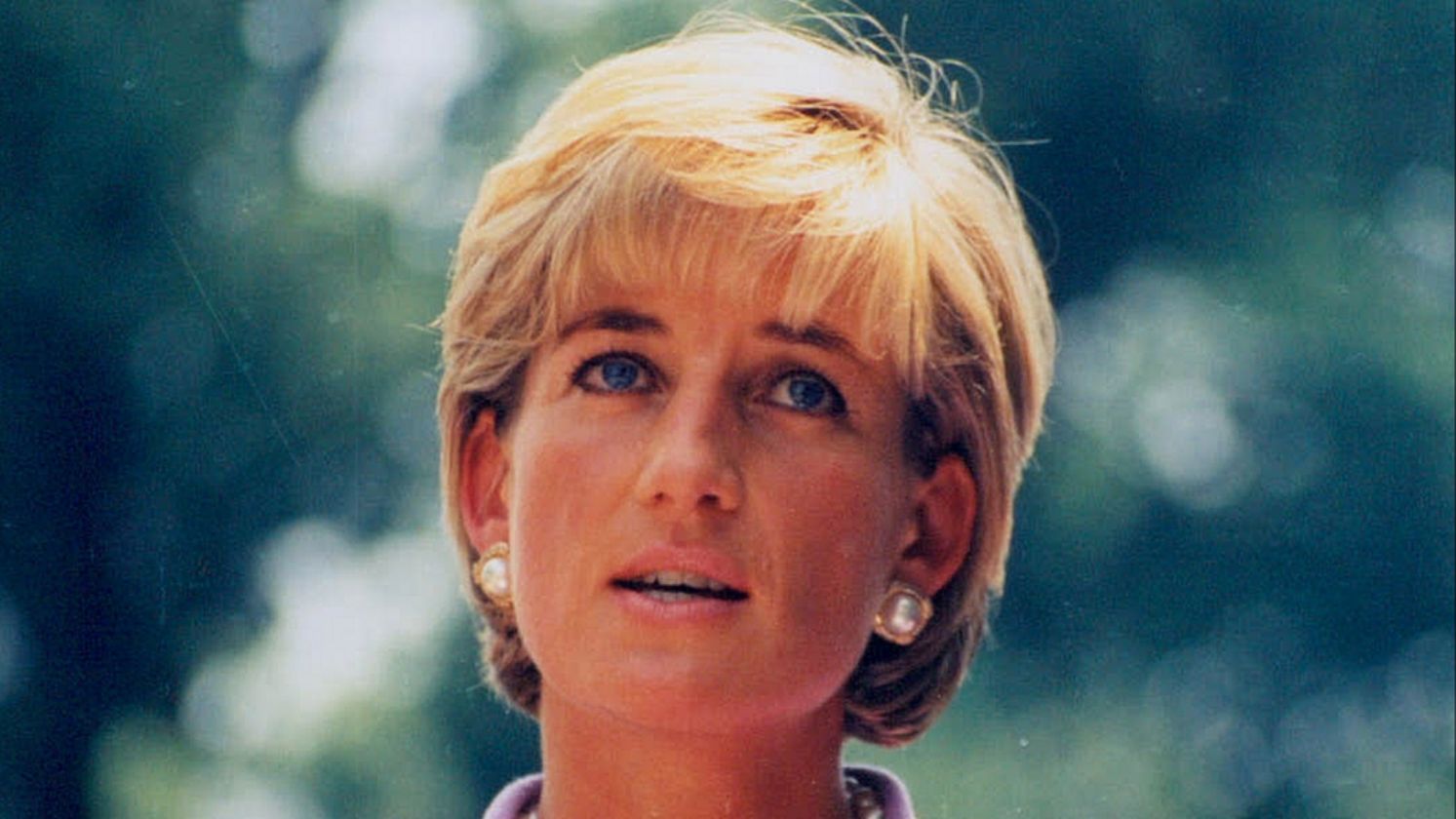Secrets Hidden In Royal Possessions
Royal possessions weren’t just shiny trophies—they were statements of power, personality, and sometimes pure ego. Each artifact reveals how royalty lived and showed off their status. Behind every crown or jewel lies a dash of human absurdity. Some items marked alliances, others sparked feuds, and a few survived centuries of chaos just by luck. So, let’s take a look at 20 artifacts that make history feel more personal—and a lot more entertaining.
 John Michael Wright on Wikimedia
John Michael Wright on Wikimedia
1. Crown Of Saint Edward
Crafted in 1661 for Charles II, the current St Edward’s Crown is made of 22-carat gold, standing 30 centimeters tall and weighing 2.23 kilograms. Last used publicly at Queen Elizabeth II’s coronation in 1953, this masterpiece remains part of the British Crown Jewels.
 United Kingdom Government on Wikimedia
United Kingdom Government on Wikimedia
2. Tutankhamun’s Burial Mask
Discovered by Howard Carter in the Valley of the Kings, Tutankhamun’s burial mask remains one of Egypt’s most treasured artifacts. On its back, a sacred spell from the Egyptian Book of the Dead is inscribed, meant to guide the young pharaoh’s spirit safely into the afterlife.
3. Catherine The Great’s Diamond Brooch
Catherine the Great’s famed diamond brooch showcased the Orlov diamond, a dazzling 189.62-carat gem gifted to her by Count Orlov, her devoted lover. Though not part of the official imperial regalia, the jewel displayed her unmatched taste for grandeur and authority.
4. Peacock Throne
Diamonds, rubies, and emeralds turned mere metal into imperial majesty when Shah Jahan commissioned his throne in the early 17th century. The precious stones adorned an intricate design crowned by twin peacocks, creating a masterwork that Persian ruler Nader Shah would ultimately seize in 1739, never to resurface.
 AnonymousUnknown author on Wikimedia
AnonymousUnknown author on Wikimedia
5. Queen Victoria’s Wedding Dress
In 1840, Queen Victoria redefined bridal fashion with a white silk satin gown trimmed in Honiton lace and an eighteen-foot train. Before her, no color ruled weddings, but her choice created a tradition. Surprisingly, the dress’s symbolism of purity and devotion endured, as its lace graced her funeral in 1901.
 Engraved by S Reynolds after F Lock on Wikimedia
Engraved by S Reynolds after F Lock on Wikimedia
6. Tsar Nicholas II’s Fabergé Easter Egg
From 1885 to 1917, the House of Fabergé elevated Easter gift-giving to unprecedented artistic heights through fifty imperial eggs commissioned by Tsar Nicholas II. What began as presents for his wife and mother evolved into increasingly intricate masterworks.
7. King Henry VIII’s Armor
Displayed in the Tower of London’s armor gallery, King Henry VIII’s 1540 suit of armor stands as a bold symbol of Tudor strength. Crafted from forty pounds of steel and fitted to his imposing frame, it commands attention, especially with its elaborate codpiece.
 Unknown authorUnknown author on Wikimedia
Unknown authorUnknown author on Wikimedia
8. Empress Dowager Cixi’s Court Robes
Crafting court robes for Empress Dowager Cixi required exceptional mastery of silk embroidery. Artisans meticulously stitched dragons and bats with precious gold thread, infusing every detail with meaning. Through their painstaking craftsmanship, these robes became symbols of Qing dynasty authority.
 John Yu Shuinling on Wikimedia
John Yu Shuinling on Wikimedia
9. Sword Of Charlemagne (Joyeuse)
The ancient blade whispers tales of its tenth-century birth, while the younger hilt and pommel speak of later transformations. Together, they became Joyeuse, Charlemagne's sword wrapped in magical medieval lore, gracing French coronation ceremonies.
10. Queen Elizabeth I’s Armada Jewel
Upon close inspection, this royal jewel reveals its sophisticated design: a pendant that could also be attached to clothing, adorned with Elizabeth I's portrait. Hidden compartments for miniature portraits add intrigue, while the piece's broader purpose commemorates England's decisive victory over the Spanish Armada in 1588.
 Formerly attributed to George Gower on Wikimedia
Formerly attributed to George Gower on Wikimedia
11. Haile Selassie’s Imperial Crown
In 1930, international dignitaries leaned forward as Ethiopia's moment approached. The Duke of Gloucester watched with others as Haile Selassie emerged, crowned in a masterwork of gold and precious stones. Above all gleamed the Lion of Judah, turning gems into imperial authority incarnate.
12. King Sejong’s Royal Seal
King Sejong’s royal seal presented the sovereign authority of 15th-century Korea. Typically crafted from gold and engraved with Chinese characters, it authenticated royal decrees and vital state documents. Beyond this emblem of power, Sejong’s reign is most celebrated for his creation of Hangul, Korea’s revolutionary written alphabet.
13. Koh-i-Noor Diamond
The Koh-i-Noor, meaning “Mountain of Light” in Persian, is one of history’s most storied gems. Once adorning the Mughal Peacock Throne, this 105.6-carat diamond now shines in the Queen Mother’s Crown within the British Crown Jewels. Legends surround it—especially the belief that it brings misfortune to men who wear it, yet spares women.
14. Emperor Meiji’s Military Uniform
Emperor Meiji’s Western-style military uniform became a defining symbol of Japan’s transformation during his reign. Worn at important state ceremonies, it reflected his determination to modernize the nation and align it with global powers.
 Takahashi Yuichi (1828-1894) on Wikimedia
Takahashi Yuichi (1828-1894) on Wikimedia
15. Sceptre With The Cross
Created for Charles II’s coronation in 1661, the Sceptre with the Cross is a cornerstone of the British Crown Jewels and a potent emblem of royal authority. Measuring 92 centimeters and weighing about 1.1 kilograms, it features the Cullinan I diamond—the world’s largest clear-cut gem.
16. King Philip II’s Golden Helmet
Gleaming beneath ceremonial light, King Philip II’s golden helmet embodied Spain’s union of faith and monarchy. Forged from steel and richly gilded, it bore intricate Christian motifs celebrating divine rule. Once worn in solemn processions, it now rests in Madrid’s Prado Museum.
 Attributed to Salomon Noveliers on Wikimedia
Attributed to Salomon Noveliers on Wikimedia
17. Queen Nefertiti’s Cosmetic Jar
Once cradled in Queen Nefertiti's private chambers at Amarna, this alabaster vessel safeguarded the precious oils and cosmetics that adorned Egypt's most beautiful queen. Now a silent witness to ancient beauty rituals, the jar's royal inscription illuminates the personal care traditions of 18th Dynasty royalty.
18. Emperor Akbar’s Jeweled Turban Ornament
Catching the light of empire, Emperor Akbar’s jeweled sarpech crowned the Mughal ruler with brilliance and authority. Encrusted with diamonds, emeralds, and pearls, it represented royal prestige. Adopted later by nobles across India, the sarpech transformed into an emblem of status.
 Unknown authorUnknown author on Wikimedia
Unknown authorUnknown author on Wikimedia
19. King George VI’s Coronation Bible
In 1937, this sacred Bible fulfilled its destined role at King George VI's coronation, marking a singular moment in Britain's royal narrative. Today, carefully preserved within the Royal Collection, it crosses its ceremonial origins to serve as a bridge between that solemn day and our present era.
20. Emperor Franz Joseph I’s Imperial State Crown
Rising in a unique miter shape crowned by a striking central arch, Emperor Franz Joseph I’s Imperial State Crown stands apart among Europe’s royal regalia. Crafted as a symbol of Habsburg power, it remains preserved within Vienna’s Kunsthistorisches Museum.
KEEP ON READING

10 Famous Paintings That Were Briefly Stolen & 10 That…
Lost & Found. From Leonardo da Vinci's Mona Lisa to…
By Christy Chan Oct 14, 2025
The 20 Greatest Drummers In History
A Band Is Only As Good As Its Drummer. Drummers,…
By Emilie Richardson-Dupuis Oct 23, 2025
20 Historical Events Everyone Always Remembers Incorrectly
When History Plays Tricks On Memory. You might feel confident…
By David Davidovic Oct 17, 2025
One & Done: 20 American Presidents Who Only Served A…
America’s One-Term Commanders. Some presidents entered the White House with…
By David Davidovic Oct 17, 2025
10 Princesses Who Broke The Rules & 10 Who Played…
Life Isn't A Fairy Tale. Princesses aren't always sweet and…
By Ashley Bast Oct 22, 2025
20 Historic Duels That Took Place In American History
Where Insults Turned Into Gunfire. Duels were once a grimly…
By Chase Wexler Oct 16, 2025











